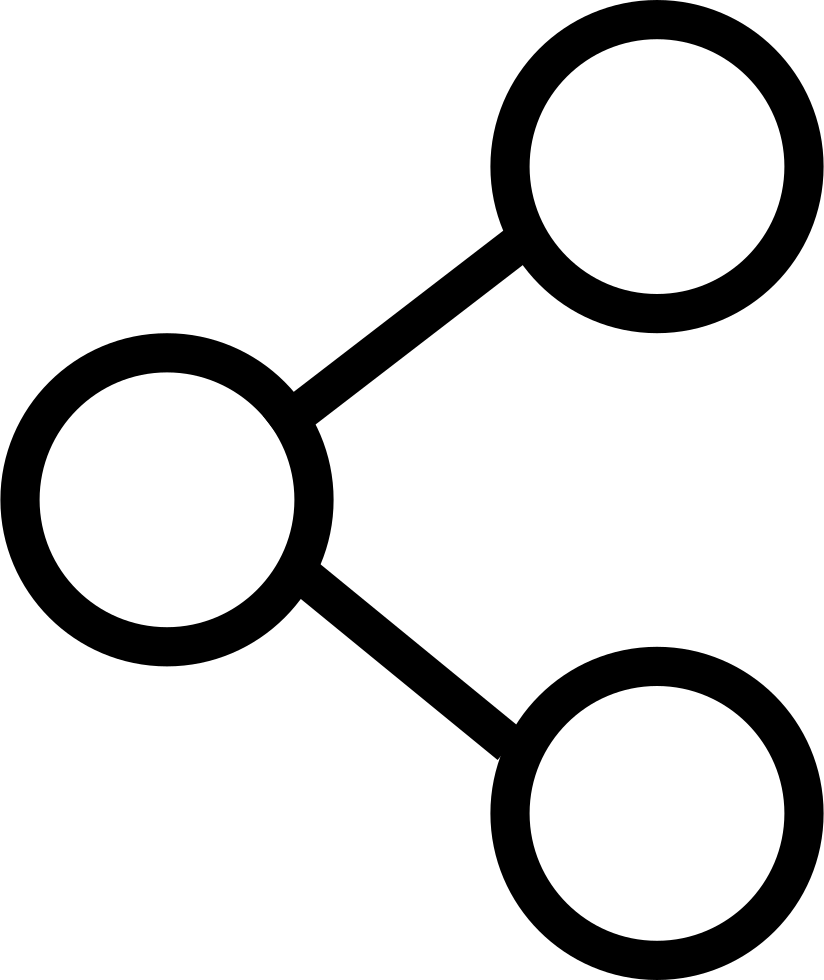
The Use of Electronic Vote Within the Political Parties (Full-Length Article)
The political parties are fundamental pieces for the proper functioning of a democratic system since they allow to add in an orderly way individual interests translating them into political proposals.
That is why constitutional texts usually establish certain requirements that go beyond the ordinary regulation of associations. In the Spanish case, for example, the sixth article recalls that political parties "express political pluralism, attend the formation and manifestation of popular will and are a fundamental instrument for political participation." As a counterpart to such activities, some of which the parties assume in a quasi-monopolistic regime, the Constitution itself emphasizes that "its internal structure and functioning must be democratic."
All this indicates that the legal nature of political parties oscillates between two dimensions, a private one based on the general model of associations and a public one that highlights the tasks entrusted to them in the process of political representation. While the first one affects association freedom as an area immune to state interventions, the public nature of the parties also leads to certain restrictions for this type of association.
However, the Constitution does not specify in what manner this democratic character must manifest itself and the truth is that the legislator has been up to date very scrupulous when imposing certain guidelines derived from such constitutional obligation. It happened, for example, with the Law 54/1978, of December 4, on Political Parties and this is recognized by the Statement of Reasons of the law currently in force when recalling the existence of a “general coincidence on the lack of current legislation at the time of specifying the constitutional requirements of democratic organization and operation ”(Organic Law 6/2002, of June 27, on Political Parties).
The new regulation of 2002 incorporates other requirements, but does not imply, in our opinion, a true qualitative leap in relation to previous legislation. In this sense, the new regulations prefer not to rule on certain problematic aspects of the internal life of political parties. Nothing is indicated, for example, about the need for direct intervention of the affiliates for the determination of electoral candidates, for the selection of the members of the executive committee or for the adoption of certain strategic decisions. The law is limited to requiring the presence of “formulas of direct participation of the affiliates in the terms set forth in their Statutes, especially in the election processes of the [sic] superior governing body of the party” (art. 7.1). Note, in any case, that the superior governing body of the party does not correspond to the executive committee, that is, to the ordinary governing body, but to the general assembly, as reflected in the literal wording of the following section of the law (art. 7.2).
All this becomes relevant if we contemplate the evolution of the internal functioning of political parties. In the first place, after uncertain beginnings, recourse to the primaries has extended notably as a mechanism in which affiliates, and sometimes sympathizers, are allowed to decide the electoral candidacies. Such direct participation is also reflected in the increasing use of consultations for strategic decision-making and in the selection of internal leaders.
Second, such innovations often use digital technologies to streamline the process. In this sense, Internet voting has established itself as an instrument of great impact to renew the internal life of the parties. In Spain, for example, all state-level parties and parliamentary presence, except PP and VOX, have already used it. In addition, an investigation that will come to light soon coordinated by the author of this text gathers up to 12 cases of use of Internet voting: Citizens, Comuns, CUP, Democrates, TEAM, ERC, ICV, JxCAT, Podemos, PSOE / PSC, SI and UPyD.
Such reality contrasts powerfully with the absence of electronic voting in parliamentary or municipal elections. The first essays in the matter date back to the already distant Catalan elections of 1995 and there have been other pilot tests, among which those developed during the 2005 referendum, but the truth is that it has not gone further. There have been various legislative initiatives and even the Basque Country (Law 5/1990, of June 15, arts. 132bis) approved a specific electoral regulation of electronic voting, but was never put into practice. Lately, the Central Electoral Board has adopted a proactive position by explicitly betting on this form of voting, but its report 261/2016 has not translated into any legislative modification in this regard to date.
All this is due to various reasons, among which the satisfaction that, in general terms, generates the current suffrage systems, is worth mentioning. If we pay attention, for example, to the report issued by the State Council in 2008, where proposals for improving the electoral system are analyzed, we will find aspects that can be modified, such as the suffrage of foreigners or the type of constituencies in the elections to the European Parliament, but, in relation to the issuance of suffrage in the strict sense, that is, the stage in which the electronic vote affects, there are few doubts and they focus mainly on the suffrages of absent residents.
On the other hand, the reluctance to adopt Internet voting must also be linked to awareness of its complexity. It is not a minor innovation of the electoral process, but it calls into question certain core aspects. We find a good example of such importance in the effort that certain international organizations, such as the Council of Europe, have been making to set international standards in this regard. Recommendations approved respectively in 2004 and 2017 reflect this task. On the other hand, real experiences of electronic voting in various countries and over the past two decades show how we are facing a technology that must be approached with prudence, being aware of all the challenges that it entails and adopting all the necessary guarantees.
It is precisely for all these reasons that the Spanish political parties use electronic voting on the Internet with the appropriate legal and technical framework, that is, if this technology has been implemented following the usual recommendations in the matter.
Recall, first, that Spanish legislation on political parties omits any reference to these extremes. As stated above, the Spanish legislator has traditionally been very sparse in regulating the internal functioning of the parties and, consequently, neither rules on the eventual use of electronic voting nor establishes certain minimum requirements in the event that a Party decide to use such technology.
Be that as it may, the express references of the legislator to the secret and free vote (art. 7.3) serve as excellent support to assess whether a certain way of making decisions, in this electronic case, conforms to a democratic procedure or not. In addition, the general criterion present in the Constitution itself, consisting of the need for both internal structure and functioning to be democratic, can and should also be applied to electronic voting without the need for detailed regulation. International texts and especially Recommendation 2017 (5) of the Council of Europe should serve as a guide.
It is true that such Recommendation does not explicitly include political parties in its scope, but such an element should not prevent them from applying the recommendations included therein. Note, first, that these are mere recommendations that seek to imbue national elections in which electronic voting is used and, in this same vein, can be extended to other entities whose internal procedures must also be democratic.
On the other hand, the literal wording of the Recommendation does not prevent its application to political parties. The Recommendation questions, logically, the member states of the Council of Europe and intends to guide its legislation regarding the right to vote. In this sense and in line with the specific legislation on political parties, nothing would prevent this area from being included among the objectives of the Recommendation when improving the right to vote. As already stated, political parties are not treated normatively like other associations and such a factor allows them to be linked to the electoral procedure in general, at least as regards the internal procedures for selecting candidates.
In view of all this and the analysis of electronic voting in Spanish political parties, we should note, first, that the use of this technology is fully consolidated. There are significant differences between one party and another, but, in general, we can say that the political parties already resort normally to this formula. The parties that have used it no longer abandon it and instead its use increases, either by incorporating new entities or by expanding the range of functions for which it is needed.
Secondly, the wide variety of platforms used is striking. Up to eight systems developed by many other technology companies have been accounted for. There are also three parties that have relied on the work of their own computer units or parties that, based on an external development, have continued the maintenance and technical update themselves.
Be that as it may, these numerical data must be related to the complexity inherent in any decision process that uses Internet voting. Although any company or political entity can reach the conditions established in international standards, it is worth asking if we are effectively in this good direction, that is, if all the parties and companies reviewed are aware of the challenges involved in the implementation of electronic voting and, once detected and evaluated, they articulate the necessary measures to overcome them. With all due exceptions, the most likely answer to this question will not be too grateful. We can intuit this, for example, if we stop in a couple of aspects to which much relevance is given in the latest technological innovations of electronic voting: exhaustive verifiability and external audits of the system.
In relation to the first aspect, it is very significant that none of the analyzed parties incorporate the so-called End-to-End (E2E) Verifiability. This is an innovation whereby the system provides evidence as the vote is cast in accordance with the intention of the voter (cast-as-intended), that the vote is stored as it has been cast (recorded-as-cast) and finally that the vote is scrutinized as it has been stored (tallied-as-recorded). After a first stage in which electronic voting was the subject of many criticisms based on the opacity of its processes, this type of verifiability tries to solve the problem by offering more convincing evidence and, at least in the first two stages, understandable to any citizen. This is an innovation that continues to spark debate, as reflected in Benaloh's analysis, but no one doubts that we are facing an important advance.
That is why it is paradoxical that none of the Spanish parties analyzed use it. Certainly such functionalities make the product more expensive and carry high technological sophistication, but it does not seem that these arguments are sufficient to omit its use within political parties.
It is sometimes pointed out that the parties, like other associations, would not need the level of guarantees present in general elections, but such an argument does not seem, in our opinion, convincing, especially if we look at the subject matter of decisions with electronic voting and the role that political parties assume in our representative system.
On the other hand, the cases in which Spanish political parties submit electronic voting to external audits, that is, specialized and impartial actors who carry out a technical analysis of the electronic voting system, are few. The vast majority of cases completely omit this element. It is, in general terms, another sample that reflects a weak awareness of the impact of electronic voting in any decision process, especially when using the remote mode via the Internet.
The analysis of political parties could continue with other factors worthy of study, such as the normative coverage of electronic voting, voter authentication procedures before the system or other similar aspects. The analysis would throw disparate conclusions in line with the wide range of systems used, but in general, we can say that there is still a substantial margin for improvement in the use of electronic voting.
The solutions are not, however, simple, at least if they arise from a purely normative perspective. As noted at the beginning, Spanish legislation is very reluctant to regulate the internal life of political parties and there are indeed very good reasons to maintain this criterion. Other countries, such as Honduras or Argentina, attribute to the state authorities the organization of the primary elections of the political parties, which also take place simultaneously. This is a model that is perhaps valid for such countries, but it must be recognized that, once this mechanism has been implemented, we already face a different type of political parties, which become even more state-owned entities than they are today. Taking into account political pluralism as a superior value of legal order and associative freedom as a fundamental right, restricting public intervention in parties, as is done in Spain, seems quite sensible, but then, if we turn to the specific case of electronic voting, the tools at our disposal to achieve an adequate implementation within the parties are also drastically reduced.
Beyond the jurisprudential work in extracting consequences from the principles already established at the legal level, such as freedom and secrecy of suffrage, the solution is surely to increase the collective conscience, both of the parties themselves and of other actors, in the underlying complexity in any electronic voting project. If this collective perception is improved, it will be much easier to polish the current electronic voting systems to adapt them to international standards. It is not a simple path nor does it seem that it can be done in a homogeneous and simultaneous way for all parties, but the important thing is to draw attention to the challenge posed and not avoid the problem trying to diminish the importance of what is being decided with electronic voting mechanisms. Recent incidents in how some parties have erroneously used electronic voting in their internal decisions can contribute decisively to initiate a path of improvement in this area.









Add comment